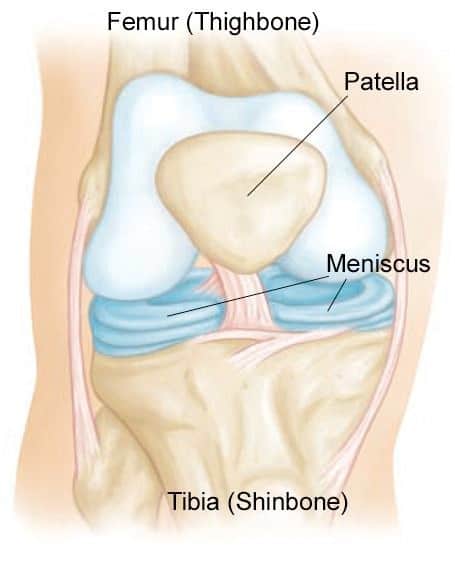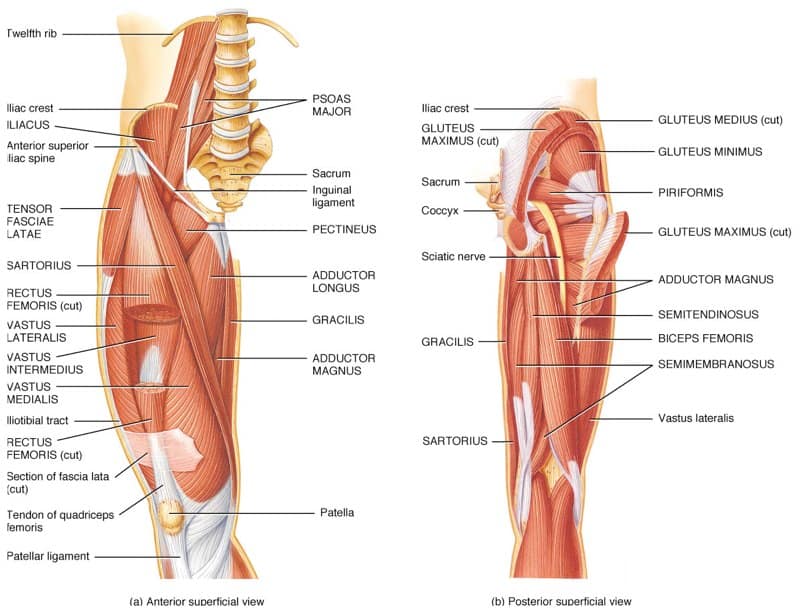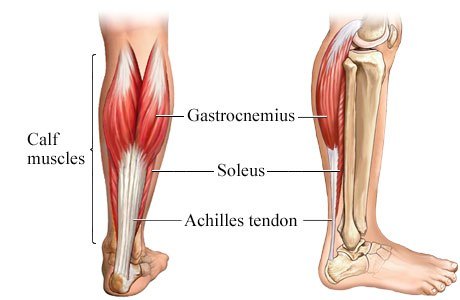Healing Meniscus Tears
If you are looking for a long term solution to knee pain that doesn’t include a knife and less body parts give us a call!
Meniscus tears are one of the most common knee injuries. They affect athletes, weekend warriors, and the general population. There are various types of meniscus tears and treatment recommendations do vary, however it is the general consensus after extensive research that removal of the meniscus, referred to as a meniscectomy, is both ineffective and over – prescribed.
Anatomy
The meniscus is situated between your thigh bone (femur) and your tibia (shin bone). It functions mainly as a shock absorber. They also give extra stability to your knee joint.

Causes of Meniscus tears
Meniscus can tear in an athletic event when the athlete performs a plant and twist of the leg such as when changing direction This would be a traumatic event. It can also occur over time due to normal wear and tear in a body. This would be a degenerative tear. Degenerative tearing is a rather common injury with as many as 16% of women 50-59 and >50% of men 70-90 years old having meniscus tears.
Symptoms Of Meniscus Tears
When you tear your meniscus you may feel a pop in your knee. This may be followed by:
- Pain
- Swelling
- Locking or catching of the knee joint
- Decreased range of motion
Nonsurgical treatment
Studies indicate that over 60% of degenerative meniscus tears may be pain free, and when/if the do become painful, surgery is not the best option. When a patient undergoes the removal of the meniscus there is no longer as much shock absorption taking place through the cartilage, this has been shown to lead to faster degeneration of the knee joint leading to osteoarthritis.
Non-surgical treatment has been found to be just as effective in relieving symptoms of meniscus pain, and you get to keep all your parts as an added bonus! This approach utilizes exercises and movement as a way to take pressure off of the meniscus and improve how all of your joints work together.
Potential contributors
When it comes to degenerative meniscus tears the two most common causes are weakness of the hips/ankles and tightness of the ankle/knee muscles.
Weakness
Your femur is controlled by a complex arrangement of muscles at the hip and in the thigh, pictured below.

Tight muscles
When the muscles that attach the ankle and knee get tight they can cause compression in the knee joint. They can also cause excessive pronation or collapse of the arch of your foot. When this happens the tibia rotates. In this situation your meniscus is first being compressed, then the bones around it are rotating, leading to a nice grind of the meniscus.
The picture illustrates that the gastrocnemius muscle crosses the knee joint. Many people with meniscus injury report cramping, or tight calves.

Solution to a Meniscus Heal
Instead of taking the meniscus out, the best treatment option is to correct the issues that are causing your meniscus to be painful in the first place. A good Physical Therapist can set a plan to heal the Meniscus without surgery.
Without addressing these imbalances, removing a portion of the meniscus will provide just temporary relief, sometimes none at all.
There are types of traumatic meniscus injury and severe injuries for which surgery may be the best option, however without trying conservative methods first, surgery cannot be said to be the best option.

